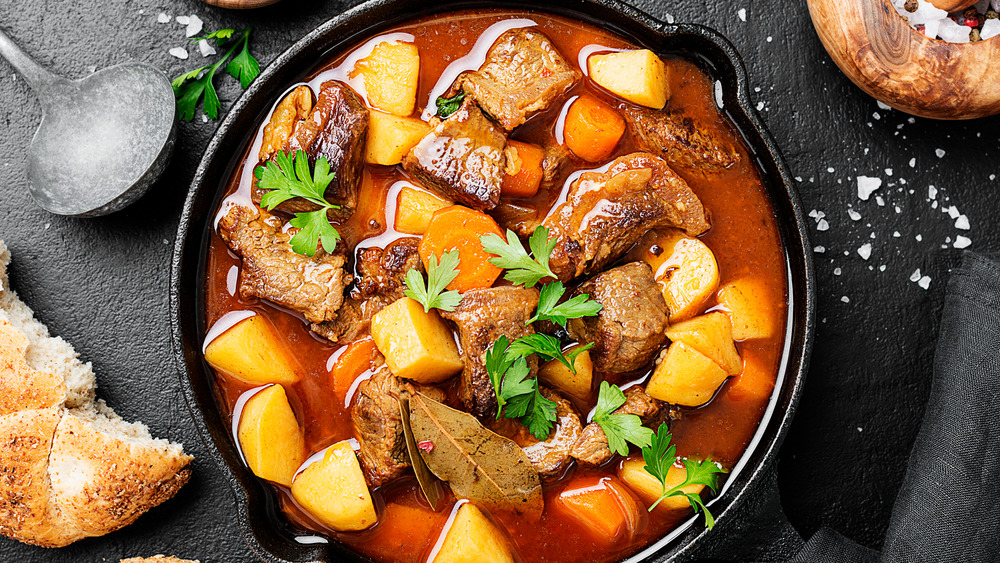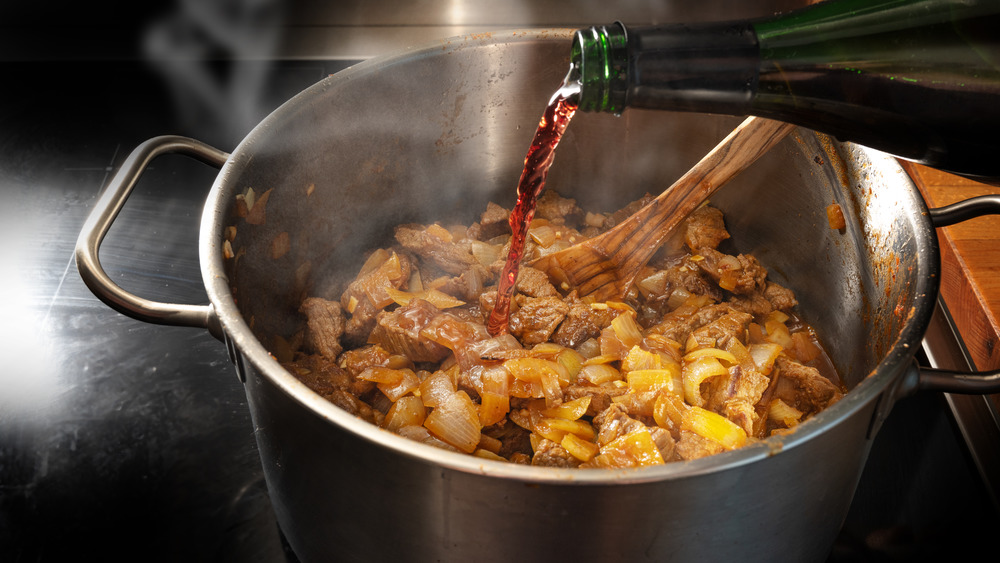Here's The Difference Between Goulash And Stew
Originally hailing from Hungary, goulash is a classic cold-weather meal. Hearty, comforting, and warming, it is a perfect dinner choice for when it's blustery and frigid outside. It is also a point of pride for many with Hungarian roots. Maria Fenyes, chairwoman of the 57th annual Hungarian Festival, explained to the Los Angeles Times in 1993 that the difference between goulash and stew is "in the paprika and the potatoes." She also said that "goulash and stew are just like cousins" and "one of them is dressed in the lively red spice and contains more potato than the other."
Beyond that, Saveur stated that one major difference between a goulash and a typical stew: "a true gulyás should be a rich soup, not a classic stew — never thickened with flour." Saveur also noted that the iconic dish is actually pronounced "GOO-yash" and it dates all the way back to the 9th century!
On the other hand, a typical stew is categorized by "a combination of larger-cut ingredients like vegetables, meat, or fish that are barely covered with cooking liquid, and simmered over low heat for a lengthier period of time," according to The Kitchn. Non-goulash beef stews — such as ragout, beef bourguignon, or even bolognese — have similarities to goulash, but the distinctions that set them apart are very evident in the flavor of the stew. Beyond that, vegetarian stews with chickpeas or tofu are also incredibly delicious, but have a totally different flavor profile than beef and tomato stews.
So, how do you make goulash?
Some of the must-haves for a classic goulash are meat (beef or pork), vegetables (onions, peppers, carrots, potato, parsnips), caraway, tomatoes, wine/stock, egg or elbow noodles, and of course, a heaping amount of paprika, according to Saveur. The Spruce Eats stated the ideal meats for goulash are tougher cuts, which are the best proteins for braised stews, allowing the meat to tenderize during the cooking process.
According to Serious Eats, some of the most important goulash techniques are searing the meat before braising, trying to avoid using thickeners, using a ton of veggies (one bunch for flavor in the braising liquid, and another bunch for freshly cooked, super-flavorful veggies that aren't overcooked), and braising in the oven, not the stove. Also, try to source higher-quality Hungarian paprika! It's such an important ingredient that adds so much flavor.
Smithsonian Magazine discussed the deep meaning of paprika for Hungarians, stating, "by the end of the 19th century, the Hungarians had bred new varieties of chilies, found ways to process them, and created their defining spice, paprika." The outlet also addressed the many uses for paprika, which was used "in abundance in their new national dish, goulash." Smithsonian also noted a 1969 Gallup poll actually found that "goulash was one of the five most popular meat dishes in the US."
Of course, there are many varieties of goulash, usually differed by type of meat, type of noodle (or even dumpling), and spice changes. No matter what type of stew or goulash you're making, though, they're all certain to warm you up this winter.

